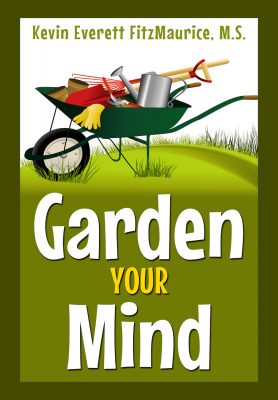Shoelaces Parable: 4 Life Lessons
- The Secret of Maturity, Third Edition for 99¢, will teach you how to own the power of emotional responsibility.
Shoelaces Parable is explained and used to provide four life lessons to help you cope and respond more effectively.
“The illiterate of the 21st century will not be those who cannot read and write, but those who cannot learn, unlearn, and relearn.” —Alvin Toffler
- Click for the book on emotional responsibility.
- Read and discover the best self-help system using CBT & REBT.
- Read and discover the world’s best breathing exercise for your feelings and stress.
Shoelaces Parable
The Story & Setup
- First, let us assume you have a poor way of tying your shoelaces. It is so poor that you often trip on your shoelaces.
- Second, let us assume you have come to counseling to deal with this self-defeating behavior.
- Third, let us postulate that you first want to know “why” you have this problem with your shoelaces.
- Your counselor now teaches you four lessons.
- Read and discover the best self-help system using CBT & REBT.
- Read and discover the world’s best breathing exercise for your feelings and stress.
Shoelaces Parable
Lesson 1 of 4
Shoelaces Parable
Why Is Not How
- Even if we find out “why” you tie your shoelaces poorly, that will not change how you tie your shoelaces.
- Even if we find out that it was your mother, father, sister, brother, cousin, aunt, uncle, grandmother, grandfather, teacher, coach, maid, nurse, babysitter, etc., who taught you to tie your shoelaces so poorly—that will not change how you tie your shoelaces.
- Even if we remember the first time we learned to tie our shoelaces wrongly, that will not change how we tie our shoelaces.
- Even if you label all your feelings about tying your shoes, cry about tying your shoes, express feelings for hours about tying your shoes, get mad at people who taught you wrong, explore the deep meaning of tying your shoes, work out your conflicts about your parents, record and analyze your dreams, free associate, relive the first time, have a rebirthing experience, role-play responding to your teachers, learn new social skills, visualize your standing up to your trainers in the past, talk to different parts of yourself in therapy about how hard it all was, are reparented, have past life therapy, engage in dramas about tying your shoes, write endless journal notes about tying your shoes, explore your script issues, restructure your family, change your diet, get detoxed, move, change jobs, stop eating sugar, get divorced, have body work, have body massages, have an emotional enema, write letters, beat pillows, scream, reframe, rewrite your life story, get your chi rebalanced, tap different parts of your body, move your eyes left and right, or whatever current technique is fashionable—it will not be tying your shoes in a new more effective way.
Shoelaces Parable
How Is Not Why
- We do not need to know “why” to know “how” you are doing what you are doing.
- For instance, no one knows “why” electricity works.
- But we can use electricity since we know “how” it works.
- Even after we know exactly how you are tying your shoelaces—that will not change how you are tying your shoelaces.
- Read and discover the best self-help system using CBT & REBT.
- Read and discover the world’s best breathing exercise for your feelings and stress.
Shoelaces Parable
Lesson 2 of 4
Shoelaces Parable
New Is Unnatural & Uncomfortable
- Tying your shoelaces the way you are now feels “natural” and “normal” because it is a habit—not because it is natural or normal.
- Learning to tie your shoelaces a new way—no matter how much better or how perfect it is—will be uncomfortable and take persistent practice and work.
- The new, more effective way of tying your shoelaces will feel “unnatural” and “abnormal,” not because it is wrong, but because it is against your current habit.
- Read and discover the best self-help system using CBT & REBT.
- Read and discover the world’s best breathing exercise for your feelings and stress.
Shoelaces Parable
Lesson 3 of 4
Shoelaces Parable
You Have 2 Jobs
- Unlearn the old ineffective way of tying your shoelace.
- Learn a new, more effective way of tying your shoelaces.
Shoelaces Parable
Unlearning Is Harder Than Learning
- This makes it harder, but that does not mean impossible.
- It only means it is more work and will take longer than learning from scratch.
- Unlearning is harder than learning.
- This is why many companies prefer to hire people who are not trained because now they can train them their way without having to fight or argue with their old training.
- Some frame the problem with the question, “Are you teachable?”
- Read and discover the best self-help system using CBT & REBT.
- Read and discover the world’s best breathing exercise for your feelings and stress.
Shoelaces Parable
Lesson 4 of 4
Shoelaces Parable
Practice Is the Only Magic
- The only way you will switch how you tie your shoelaces to a more productive way is—through persistent practice.
- You have to think, feel, and act against the old way until the new way becomes your new habit.
Shoelaces Parable
Insight Is Insufficient
- Thinking and insight alone will not do it.
- Feeling and talking alone will not do it.
- Trying and procrastinating will not do it.
Shoelaces Parable
Practice the 3Rs
- It would help if you recognized the wrong and the right way, removed the wrong way by deciding to give it up, and replaced the old way with the new way (3Rs).
You Need the 3Rs
- Recognizing involves thinking and insight.
- Removing involves feeling and motivation.
- Replacing involves doing and creating new habits.
- Problem Solved! 3Rs is the book that teaches the 3Rs.
Practice Makes Natural
- So, it would help to think, feel, and act against the old to make the new natural.
- Now, let us help you recognize the poor way, recognize a better way, feel strongly enough to switch ways, and learn how to practice the right way.
- Read and discover the best self-help system using CBT & REBT.
- Read and discover the world’s best breathing exercise for your feelings and stress.
Shoelaces Parable
A “Why” Answer
- Answers to “why” vary according to the preferences of the hunters as to which target to blame.
- Targets can be grouped into being either of an inner or an outer nature.
- Inner targets can be grouped either as responsibility or spirituality issues.
- Outer targets can be grouped either as physical or social environment issues.
- Hence, there are many permutations, possible combinations of causes, and many possible explanations.
Perhaps
- One answer that makes sense and can help has three parts:
- You are biologically prone to the negative (genetic).
- You are sociologically conditioned to the negative (conditioning or training).
- You are habitually drawn to the negative (habit).
Bottom Line
- Work against your negative tendencies, whether natural, social or just a bad habit.
- Read and discover the best self-help system using CBT & REBT.
- Read and discover the world’s best breathing exercise for your feelings and stress.
Shoelaces Parable
Quotations Various Sources
Listed Alphabetically
“A baby expects to be soothed, but a mature adult soothes themselves.” —Kevin Everett FitzMaurice
“A man’s as miserable as he thinks he is.” —Marcus Seneca
“A wise man will make more opportunities than he finds.” —Francis Bacon
“Adults are experts at self-disturbance and inept at self-soothing.” —Kevin Everett FitzMaurice
“Are you part of the problem or part of the solution?” —Anonymous
“But let every man prove his own work, and then shall he have rejoicing in himself alone, and not in another.” —Galatians 6:4
“Don’t go around saying the world owes you a living. The world owes you nothing. It was here first.” —Mark Twain
“Either do not attempt at all, or go through with it.” —Ovid
“God has entrusted me with myself.” —Epictetus
“Great works are performed not by strength, but by perseverance.” —Samuel Johnson
“If pleasure first, then pain second.” —Kevin Everett FitzMaurice
“If we have not peace within ourselves, it is in vain to seek it from outward sources.” —Francois de La Rochefoucauld
“It is not easy to find happiness in ourselves, and it is not possible to find it elsewhere.” —Agnes Repplier
“Luck is where preparation meets opportunity.” —Anonymous
“Man is condemned to be free; because once thrown into the world, he is responsible for everything he does.” —Jean-Paul Sartre, 1905-1980
“No one has ever gotten to anyone.” —Kevin Everett FitzMaurice
“Nothing stops the man who desires to achieve. Every obstacle is simply a course to develop his achievement muscle. It’s a strengthening of his powers of accomplishment.” —Eric Butterworth
“Obstacles don’t have to stop you. If you run into a wall, don’t turn around and give up. Figure out how to climb it, go through it, or work around it.” —Michael Jordan
“Pain is inevitable. Suffering is optional.” —Anonymous
“Teaching the principle of emotional responsibility can be one of the hardest tasks in REBT as clients may have habitually blamed others for their problems, and now the therapist is pointing to the true source of their emotional problems—themselves.” —Michael Neenan and Windy Dryden, Rational Emotive Behavior Therapy: Advances in Theory and Practice, p. 43
“The only disability in life is a bad attitude.” —Scott Hamilton
“The willingness to accept responsibility for one’s own life is the source from which self-respect springs.” —Joan Didion
“There is no man so low that the cure for his condition does not lie strictly within himself.” —Thomas L. Masson
“Whatever may be, I am still largely the creator and ruler of my emotional destiny.” —Albert Ellis and Robert A. Harper, A Guide to Rational Living, Third Edition, p. 252
“While they were saying among themselves it cannot be done, it was done.” —Helen Keller
“Why is it that people are willing to take responsibility for their happiness or mild sadness but not their severe disturbance or great unhappiness?–why ego, of course!” —Kevin Everett FitzMaurice
- Read and discover the best self-help system using CBT & REBT.
- Read and discover the world’s best breathing exercise for your feelings and stress.
Shoelaces Parable
Related Pages of Free Information
- 3 Stages of Counseling or Switching
- Act Against Anger
- Blame or Responsibility
- Coping Skills: Free Help
- Dental Analogy of Counseling
- Emotional Responsibility: List Pages
- Garden Your Mind: 3Rs
- Reasons Why
- Responsibility Issues: Free Help
- What, How & Why Questions
- What, How & Why Questions
- Read and discover the best self-help system using CBT.
- Read and master the life skill of acceptance using the best combination of CBT, REBT, & Stoicism.
Shoelaces Parable
6 Groups of Topics Menu
- 1. Pages by Topic
- 2. Fast-Facts by Topic
- 3. Quotations by Topic
- 4. Poems by Topic
- 5. Scripture by Topic
- 6. Websites by Topic
- Read and master the life skill of acceptance using the best combination of CBT, REBT, & Stoicism.
- Read and discover the world’s best breathing exercise for your feelings and stress.
- Read and discover the best self-help system using CBT & REBT.
Shoelaces Parable
9 Skills & Topics Menu
- 1. Anger Skills & Topics
- 2. Blame Skills & Topics
- 3. Communication Skills & Topics
- 4. Coping Skills & Topics
- 5. Counseling Skills & Topics
- 6. Praying Skills & Topics
- 7. Recovery Skills & Topics
- 8. Responsibility Skills & Topics
- 9. Thinking Skills & Topics
- Read and master the life skill of acceptance using the best combination of CBT, REBT, & Stoicism.
- Read and discover the world’s best breathing exercise for your feelings and stress.




